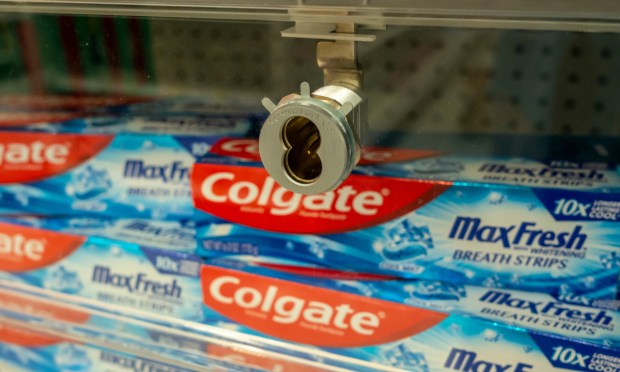Target’s New Strategy? Locking Up Essentials, Letting Luxury Loose

Why do so many shoppers like Target or Walmart? For some, it’s considered a nearby oasis that offers affordable prices on a diverse range of products. From groceries to clothing and electronics, these big format retailers provide a one-stop seamless shopping experience.
However, in light of recent developments in the retail sector, one may wonder if the consumer sentiment around these big retailers remains the same.
Over the past few years, it’s no secret that retail theft has seen a concerning uptick across the United States. And the trend is not unique to Target but has affected a multitude of retailers, both large and small. The reasons for this surge in retail theft are multifaceted and include factors such as economic hardship, organized crime, and the allure of easily reselling stolen goods.
Retailers like Walmart and Home Depot raised this issue during their recent earnings calls.
Home Depot acknowledged that its profit margins had been hurt by retail theft. In the second quarter, Home Depot’s gross margin was at 33%, showing an 8-basis-point decrease compared to the previous year, with this decline primarily attributed to shrinkage.
“Shrink has been a consistent pressure over the last several quarters and even the last few years. It’s something we’re tackling every day,” Home Depot CFO Richard McPhail said on the company’s earnings call.
John Furner, CEO of Walmart US, noted that shrinkage had seen a slight increase this year, building upon the rise observed in the previous year. He also emphasized that the issue varied across regions of the country.
Read more: Retail Theft Costs US Merchants Like Walmart and Target $100 Billion a Year
Moreover, in a recent announcement, Target disclosed its decision to close nine of its stores on Oct. 21, citing shoplifting concerns in locations including New York City, San Francisco, Seattle and Portland, Oregon.
“In this case, we cannot continue operating these stores because theft and organized retail crime are threatening the safety of our team and guests, and contributing to unsustainable business performance,” Target said in the announcement.
The company had also stated that it had “invested heavily” in theft deterrents, including the hiring of more guards and the implementation of other tools.
Read also: Target to Shutter 9 Stores Due to Retail Theft Wave
However, these substantial investments came at the expense of the customer experience. The experience has become so bothersome and unattractive to consumers that they’ve been expressing their frustration out on TikTok.
One TikToker, who also happens to be a doctor, Dr. Emily Long, pointed out that while $40 bottles of La Roche Posay were left unattended, essential items like $8 body wash were locked away. Long expressed her frustration, describing the shopping experience at her local Target as a “dystopian nightmare.” This frustration led her to abandon the idea of checking out fall items like candles, which she would typically do during a Target run.
Instead, she became so desperate to leave that she ended up spending more time than necessary waiting in the lengthy self-checkout line, which extended all the way to the back of the store.
Theft Prevention Is Backfiring
Consumers now find themselves seeking assistance from store personnel more frequently when they wish to purchase an item, especially if it is locked up. This increased reliance on assistance has created longer wait times and a potential source of frustration for shoppers who value the convenience of a quick in-and-out store run.
Furthermore, as the need for assistance increases, it can place additional strain on the already reduced number of employees on the sales floor. This reduction in staff has been driven by both a decline in employee willingness to work in this challenging environment and the retailers’ choice to deploy fewer employees on the sales floor. Self-checkout lines, a once convenient option, have grown increasingly lengthy.
Depending on who you ask, where they’re located and what they’re shopping for, the sentiment around the in-store experience might vary. Suburban consumers shopping for home goods might feel that the in-store experience has remained consistent. However, for urban shoppers in areas where retail theft has surged, this assessment might vary.

